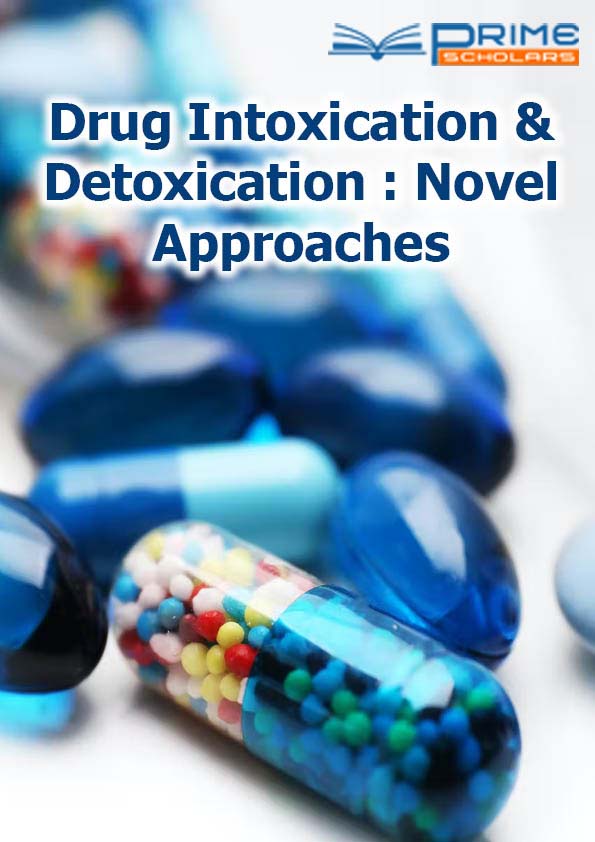Commentary - (2023) Volume 4, Issue 2
Current and Arising Detoxification Treatments for Basic Consideration
Anuj Chauhan*
Department of Chemical Engineering, University of Florida, USA
*Correspondence:
Anuj Chauhan,
Department of Chemical Engineering, University of Florida,
USA,
Email:
Received: 31-May-2023, Manuscript No. DIDNA-23-16831;
Editor assigned: 02-Jun-2023, Pre QC No. DIDNA-23-16831 (PQ);
Reviewed: 16-Jun-2023, QC No. DIDNA-23-16831;
Revised: 21-Jun-2023, Manuscript No. DIDNA-23-16831 (R);
Published:
28-Jun-2023, DOI: 10.36648/DIDNA 4.2.11
Description
Time and time again, prescription drugs intended to improve
quality of life and life expectancy are mishandled, either accidentally
or intentionally. This also applies to illegal drugs such
as cocaine, heroin, and narcotics. Such events can lead to drug
overdoses, which can lead to unprecedented discomfort, prolonged
recovery time, and death. Similarly, millions of people
are exposed to poisons and toxins, such as snake venom, that
are present in the environment. Finally, new advances in synthetic
and organic combat also offer the prospect of further
possibilities. Numerous health-enhancing drugs have long
been used in clinical practice to reverse the harmful effects
of toxins. These include naloxone and sodium bicarbonate,
among others. It is intended to treat side effects from overdose.
Overall, current medications are inadequate, as many
patients are or are currently under the influence of alcohol.
Intravenous (IV) administration of protein particles, miniature
or nanoparticles, and colloids into the patient’s circulation is a
rather late and important step in the treatment of substance
addiction. Progress has been made in this area in recent years,
and significant advances in nanotechnology will see rapid improvements
over the next 10-15 years. Unlike drugs designed
to treat the effects of addiction, protein particles and particles
cause detoxification by moving from the site of injury (often
including the heart and brain) into the bloodstream. This is
caused by explicit or vague poison restrictions. Below, we will
look at the need for antidotes from a basic perspective, then
introduce particles and colloids, protein fragments, and sneaky
therapeutic techniques. There are also summaries of the most
sensible research that takes place in each room. Prescription
drugs are a key target for many of the latest detox treatments
in development. One of the most harmful events associated
with taking prescription drugs is “harm,” which refers to excessive or inappropriate drug.
Many of the cases documented in involved physician-prescribed
psychotropic medications, such as antidepressants.
Tricyclic antidepressants (TCAs) are one of the most dangerous
classes of antidepressants, with amitriptyline (AMI), dosulepin
(DOS), and imipramine (IMI) accounting for a significant portion
of overdoses. In the UK, TCA flooding kills about 268 people
each year, and toxic substances management focuses on his
TCA injury as the third most common type of injury in a US report.
Serotonin reuptake inhibitors (SSRIs) have become a new
quality level of treatment for depression, while tricyclic antidepressants
are associated with headaches, migraines, neuralgia,
poor concentration and confusion, and continues to be used
for various side effects such as pain. When various medicines
do not work. Most cases of abuse involving TCA involve suicide
attempts, but abuse for happiness has also been reported.
Conclusion
The primary goal of most detoxification measures is drug relocation.
They are specifically designed to increase the entrapment
of drug molecules such that unbound drug particles are
sequestered in the circulatory system upon intravenous administration.
This sequestration moves drug particles in the tissue
into the blood chambers and, consequently, out of vital organs
such as the heart and central sensory organs.
Acknowledgement
None.
Conflict Of Interest
The author’s declared that they have no conflict of interest.
Citation: Chauhan A (2023) Current and Arising Detoxification Treatments for Basic Consideration. Drug Intox Detox: Novel Ap-
proaches. 4:11.
Copyright: ©2023 Chauhan A. This is an open-access article distributed under the terms of the Creative Commons Attribution
License, which permits unrestricted use, distribution, and reproduction in any medium, provided the original author and source
are credited.
